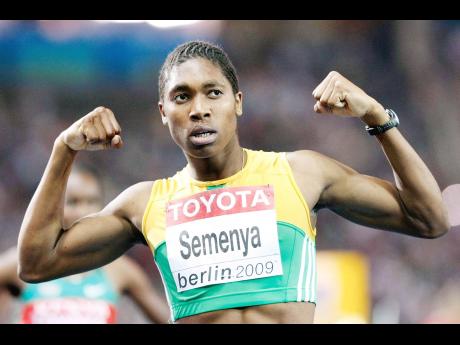Dalton Myers | A look at the IAAF's 'testosterone' rule: Part Two
Since last week's column, I have received several emails and messages either in support of my views or lambasting me for wanting a 'male' in 'female' races. There are some who even ask how I could support Caster Semenya and other 'males' parading as women in athletics when it potentially prevents Jamaicans from gaining medals.
These comments and varying views are indicative of how issues surrounding difference of sexual development (DSD) are divisive in the sports world. In fact, the evidence that the IAAF used to create both the new Guidelines for Classification and the previous rule has so far failed to withstand legal challenges. This time around may be the end of any further attempt when challenged at the Court of Arbitration for Sport (CAS).
I have seen other Gleaner columnists and researchers suggest creating a third category for intersex athletes as a solution in order to not colour the gender line in athletics. This for me isn't a viable solution. In fact, it is even more complicated. It is believed that intersex females account for nine in every 2,000 persons in the population. Other research has identified seven of every 1,000. The Intersex Society of North America argues that "we do know that about one in 2,000 children is born with genitals that are pretty confusing to all the adults in the room", while indicating that intersex is very rare.
As for athletics, there is no clear indication of how many women have so far been declared as intersex. There are indications that there were nine athletes with DSD at the 2011 and 2013 IAAF World Championships, including Caster Semenya. As the controversy unfolds, there will be issues such as persons not willing to 'declare' themselves intersex due to privacy and fear of discrimination, as well persons simply unable to declare what 'sex' they are, and those who just do not know.
The truth is I am not sure what other alternatives the IAAF has; however, this current rule has significant privacy issues. It is invasive, requiring measures that could be considered as contravening a person's human rights. To date, there is nothing in the regulations that speaks to a specific age for this classification to begin. Neither does it speak to what age a female should start the mandatory suppressing of the testosterone levels.
Problematic choices
Additionally problematic is the IAAF's choices of the range of events to which the rule applies. There's still no explanation for adding the 1500 metres since their own research did not indicate an advantage for DSD athletes due to elevated testosterone levels. Yet, the hammer and pole vault were not included, even though like the 400 and 800 metres, those field events were identified as among events where DSD athletes benefited the most. This then gives the impression that the rule is targeting specific athletes like South African Caster Semenya.
In my view, the IAAF is trying to manage two opposite ends of the same spectrum. This is political as much as it is legal. There are those who believe that the IAAF must protect females from unfair competition against intersex athletes. We now know that in 2011, some intersex athletes' testosterone levels ranged from 15nmol/L to 29.6nmol/L while most female athletes average about 3.1nmol/L, or below. So the reaction is understandable. However, the IAAF's own research suggests that intersex athletes, despite this elevated testosterone level, may not necessarily benefit from an unfair advantage. Therefore, it is unfair to say let us remove intersex athletes from athletics.
Of course, people have challenged the foundation on which the rule is structured as well as the legal and political issues surrounding it. For me, it is either intersex athletes are accepted or they are not accepted. While I think intersex athletes can have an advantage in some cases due to testosterone levels, I do not subscribe to the notion that it provides an unfair advantage in all cases. The research so far has not given this indication. This rule will be challenged at CAS for sure, and I have no doubt that it will be struck down.
- Dalton Myers is a sports consultant and administrator. Send feedback to daltonsmyers@gmail.com or twitter @daltonsmyers

